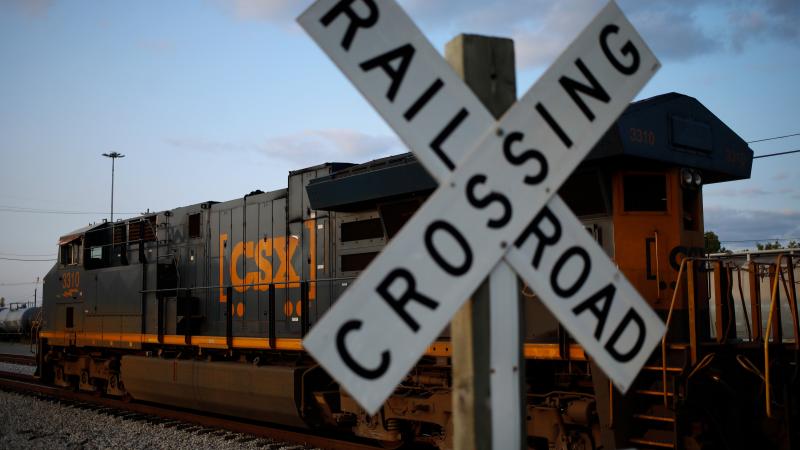Mine land cleanup in Appalachia faces federal delays, capacity limits
For mine land cleanup, the Department of the Interior has three programs states can use: an abandoned mine land fund based on fees from coal production; funding from the Bipartisan Infrastructure Law; and an abandoned mine land economic revitalization fund
(The Center Square) — Even though federal money to reclaim mine lands in Appalachia has been slow to arrive, some states have made progress on improvement plans from a generation ago nonetheless.
Efforts have turned watersheds into fisheries when they were dead 30 years ago. And some states have streamlined the reclamation process, supporting local groups limited by a lack of manpower.
For mine land cleanup, the Department of the Interior has three programs states can use: an abandoned mine land fund based on fees from coal production; funding from the Bipartisan Infrastructure Law; and an abandoned mine land economic revitalization fund.
The AML fund aims to restore the environment of mine lands, while the AMLER fund focuses more on creating productive uses of the land. However, the feds have struggled to get AMLER funds out to states quickly — only 30% of the $1 billion available have been spent, according to a report from the Government Accountability Office.
Outdoor recreation has been a major focus for AMLER funds that get used eventually.
“On mine lands you might have some sort of development, you may have a water trail, it becomes part of a rail-trail system network, waterworks improvements for towns — things like that,” said Paul Ziemkiewicz, director of the Water Research Institute at West Virginia University.
The Department of Environmental Protection estimates that up to 200,000 acres of formerly mined land need to be reforested in Pennsylvania; the state holds one-third of all abandoned mine lands in the country, with up to 1.4 million residents affected by them. U.S. Senator Bob Casey, D-Pa., expects more than $3 billion in AMLER funding will come to the state over the next 15 years for mine land cleanup.
One risk of the mine lands is water pollution, mainly from iron and aluminum.
“One of the things that’s characteristic about the Appalachian setting is you have thousands of large-to-small coal mines,” Ziemkiewicz said. “A significant proportion of those are acid mine drainage producers.”
The Pennsylvania coal fields absolutely blanket the western part of the state; the Pennsylvania Mine Map Atlas shows an almost-unbroken blob stretching from the southwest corner of the state up almost to Meadville, almost reaching Altoona in the east and Bradford in the northern tier. More pockets of mining are scattered in the northeast.
States used to focus on installing passive-treatment systems to filter out acid mine drainage, but the approach is changing due to the failure of those systems.
“No one really knew how long the were gonna last,” Ziemkiewicz said. “Some assumed 20 years, some assumed 10 years — some conked out in five years. That was just an inefficient way to deal with the acid mine drainage problem.”
A better way, he argued, was to focus on the entire watershed and funnel water down pipes into a central lime treatment plant for treatment.
“We had great success doing that. It’s efficient, operating and maintenance costs are realistic, but you have to have some kind of financial mechanism in place,” Ziemkiewicz said. “Over the last 20 years, we’ve really improved the way we do this in West Virginia … we moved to cleaning up whole watersheds by using this centralized treatment concept.”
He pointed to the Cheat River and Cheat Lake, the Three Forks Creek, and the Taggart River as examples of what can be done.
“We’ve already recovered streams like the Cheat River and Cheat Lake ,” Ziemkiewicz said. “When I got here 35 years ago or so, the Cheat Lake was dead. So was the Cheat River. Now it’s one of the best fisheries in the state. That's because of all the acid mine drainage cleanup in the basin.”
Cleaning up rivers and lakes has also brought economic benefits: more chances to recreate, the fish have returned, and people can enjoy nature again.
But it requires a shift in thinking.
“The most important thing is you want to have good metrics to determine how much benefit you’re having on a watershed — and so the objective has to be focused on the total number of stream miles recovered to their designated use,” Ziemkiewicz said.
Mine land cleanup is also taking on a more regional character. In the past, projects might have been isolated or unconnected, but now, small projects may get combined, and state or federal officials are doing more to help local groups, West Virginia Del. Evan Hansen, D-Monongalia, argued.
“I think state and federal officials are both getting better at supporting local places,” Hansen said, who also runs a consulting agency, Downstream Strategies, which helps grant applicants with AMLER project proposals.
What concerns Hansen isn’t a failure to take a broader, regional focus for mine reclamation. Instead, it’s a lack of local capacity and a variation in state standards.
“One of the challenges is that states are not necessarily using a transparent mechanism to select projects,” he said.
Though the Department of the Interior’s Office of Surface Mining Reclamation and Enforcement has final approval power, states can set their own standards for what they want in an AMLER project.
“So the danger with that type of situation is that projects are being chosen by the governor’s office for reasons that are not able to be identified,” Hansen said. “The best projects may not get chosen. I think it’s a question of good government.”
State agencies also seem hesitant to staff up for the program, he argued, holding back the programs. AMLER projects in Ohio, for example, moved through the planning process much quicker than in other states, a Downstream Strategies report found.
“Ohio has a much more hands-on approach through the Department of Natural Resources,” Hansen said. “Ohio agency staff played a more active role and helped shape applications.”
A number of mine reclamation funds give money to small communities, but they don’t always have grant writers on staff or full-time people to oversee a project. States stepping in to fill those gaps could get projects up and running faster, and completed more effectively.
Federal delays hamper states like Pennsylvania, but cleanup could pay dividends if officials make cleanup and development a priority.















